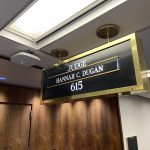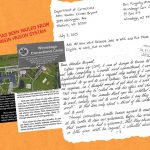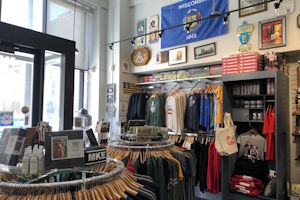Beethoven 9, but Adams and Copland, too
Edo de Waart will open his second season as the Milwaukee Symphony’s music director with the big bang of Beethoven’s Symphony No. 9. Those of us who witnessed de Waart’s first year with the MSO expect him to show us something we hadn’t heard before in that familiar symphony, as he did with Beethoven’s Sixth, among other works, last season.
I’ve had plenty to say about the Ninth over the years, and everyone knows this piece. But this weekend, I would turn your attention to John Adams’ Tromba Lontana and the Suite from Aaron Copland’s Appalachian Spring. Those two American works shouldn’t be mere warm-ups for that big Austro-German thing.
Note de Waart’s close association with Adams. De Waart was music director of the San Francisco Symphony when Adams was composer in residence there. The Houston Symphony commissioned the four-minute piece and premiered it in 1987, but de Waart recorded Tromba Lontana (Distant Trumpet) with the SFO. The MSO’s maestro knows this fanfare, which features lonely trumpets above a shimmering, galloping accompaniment, as well as anyone.
Appalachian Spring’s history is more complicated. [Aaron Copland Since 1943, by Vivian Perlis, published by St. Martin’s Press in 1989, is the source for what follows.]
Copland started writing it early in 1943, for the Martha Graham Dance Company to perform at an autumn festival. He had seen and admired Graham’s work, and Graham had used Copland’s pre-existing Piano Variations for her Dithyrambic in 1931. Graham had approached Copland about music for her Medea, but he thought the plot a little too knotted and overheated and declined. It took a $500 commission from D.C. arts patron Elizabeth Sprague Coolidge and Graham’s vague ideas about an Americana piece to make them collaborators.
The long incubation paid off. It gave Copland and Graham time to get to know one another better. They communicated often throughout that year. Graham eventually gave up her complicated plot and the Civil War readings of her original scenario and settled on the idea of a Pennsylvania pioneer farmer and his wife settling into their new home right after marriage. Copland happened on an old Shaker tune, ‘Tis a Gift to Be Simple, in a 1940 collection of folk songs.
When Graham first heard the music, in August of 1944, she wrote to Copland, who was summering in Mexico: “The music is so well knit, and of a completeness that it takes you in very strong hands and leads you into its own world… I know that the gift to be simple will stay with the people and give them great joy.”
She was right. At the time, the song was unknown. Today, because of Appalachian Spring, it is ubiquitous.
Resources for the 1944 festival were limited and so was the musical ensemble. Copland scored the piece for 13 instruments. That score won the Pulitzer Prize in music and made Copland the dean of American composers. He soon set to work on a concert version, for full orchestra, which the MSO will play this weekend.
(Concert times are 8 p.m. Friday and Saturday and 2:30 p.m. Sunday, Sept. 24-26, at Marcus Center Uihlein Hall. More details here.)
The music stands eye to eye with Graham’s dances, which is one of her greatest. Do take a little time to watch — through the miracle of YouTube — this performance, shot for television in 1958, with Graham in the starring role. I’ve embedded Part 1; click on the links for part 2, part 3 and part 4.























My kingdom for an editor.
Yep. All fixed. Meant to get back to this thing but got distracted. Thanks for the heads up, Mr or Ms Question Mark. — T.